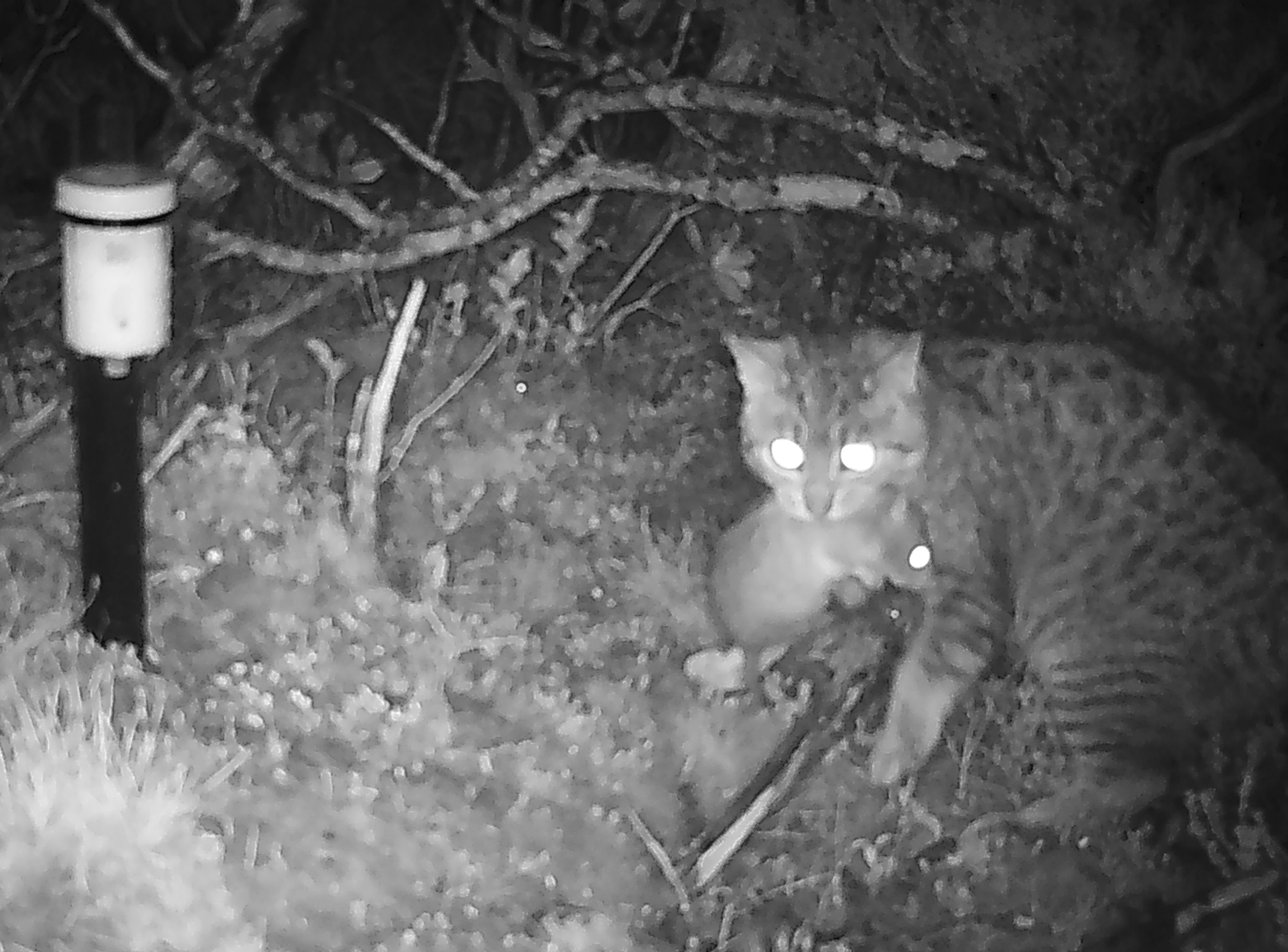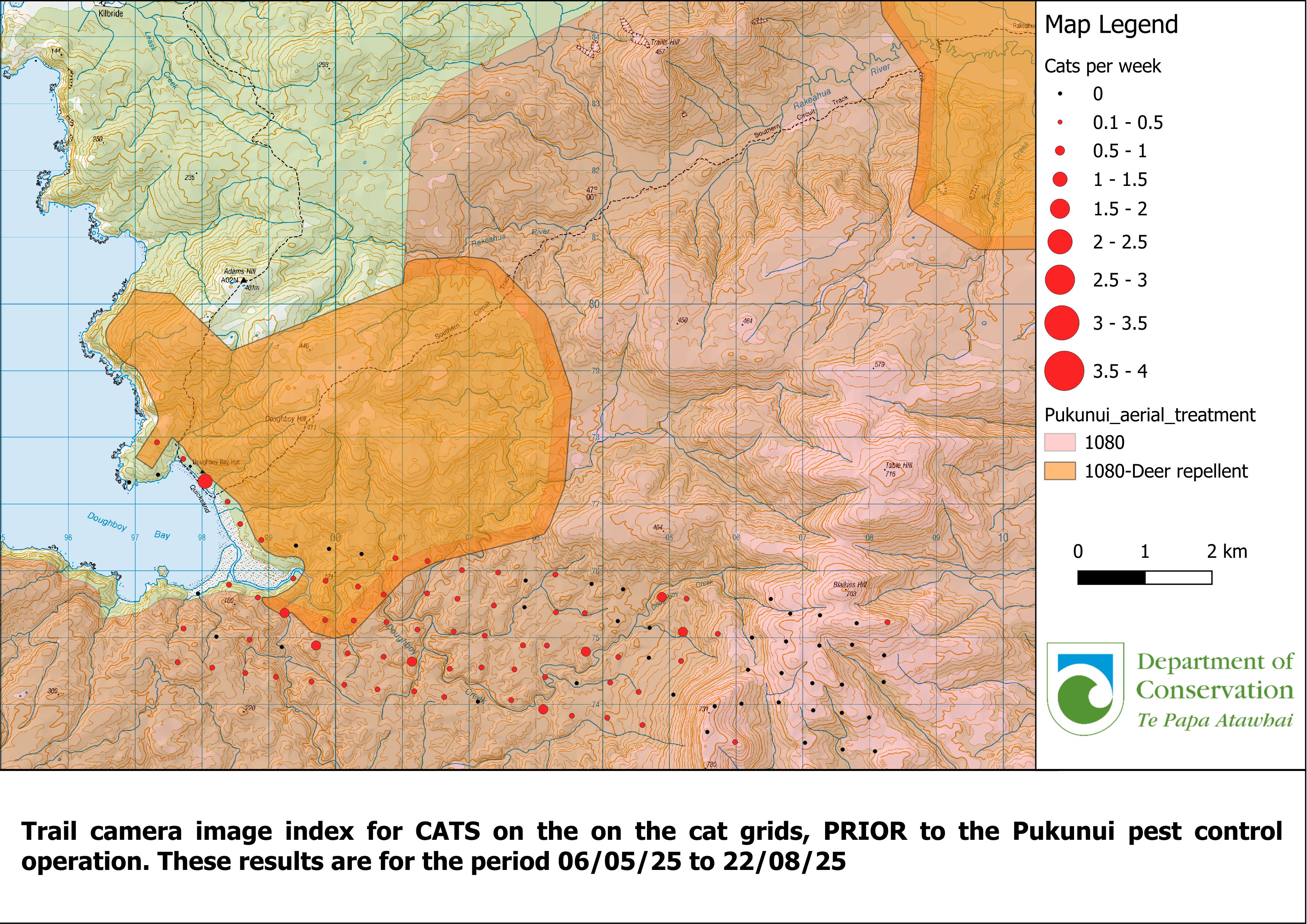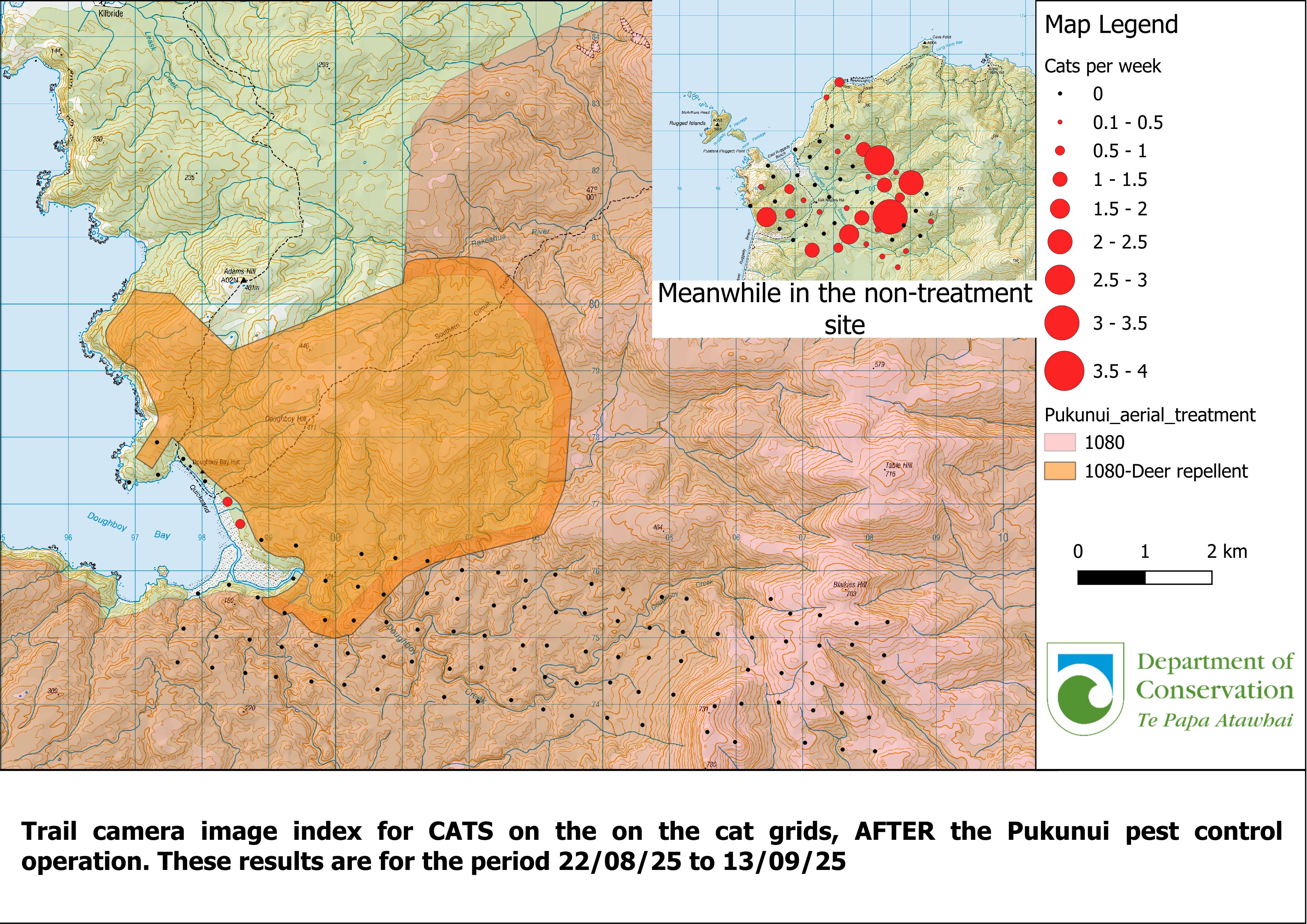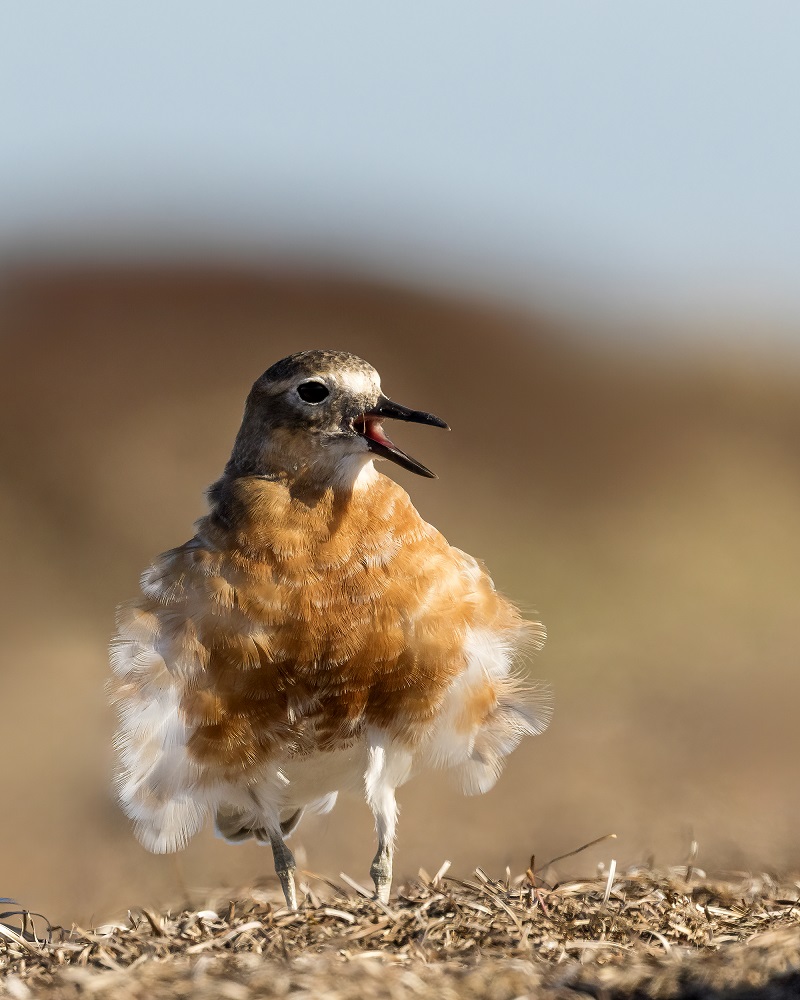1080 clears feral cats from Pukunu breeding area
15 October 2025, 1:47 AM
 Department of Conservation's recent aerial drop of 1080 poison has successfully cleared feral cats and possums from a 40,000-hectare area of Rakiura/Stewart Island. Photo: DOC/Supplied
Department of Conservation's recent aerial drop of 1080 poison has successfully cleared feral cats and possums from a 40,000-hectare area of Rakiura/Stewart Island. Photo: DOC/SuppliedA major predator control operation on Rakiura/Stewart Island - involving the controversial 1080 poison - has hopefully delivered a boost to one of New Zealand’s most critically endangered birds, the pukunui (southern New Zealand dotterel), just in time for the spring breeding season.
The Department of Conservation (DOC) has confirmed that an aerial 1080 drop carried out in August has successfully cleared feral cats and possums from a 40,000-hectare area encompassing vital pukunui breeding grounds in the Tin Range and surrounding forest.
Initial monitoring results show that predator numbers have been reduced to undetectable levels for at least three weeks following the operation.


DOC Southern South Island Operations Director Aaron Fleming said this spring would mark the first time in recent memory we’re entering a breeding season filled with cautious hope and optimism,”
“Feral cats are the number one predator of pukunui. Every year, despite trapping, hunting and other ground-based measures, pukunui numbers were sliding closer to extinction.”
With only 105 birds remaining, the species is still at risk, but Fleming says the operation has given them a fighting chance.
“Clearing out feral cats across this important habitat will help improve the odds of survival and population growth for these ‘under-birds’,” he said.
DOC deployed over 300 trail cameras to monitor predator activity before and after the operation.
More than 400,000 images have already been analysed, revealing a dramatic drop in feral cat and possum presence.
“Prior to the operation, feral cats and possums were widespread in the 40,000-hectare operational area. Following it, we’ve had no detections for at least three weeks,” Fleming said.
However, he cautioned that reinvasion is inevitable.
“Our cameras have picked up plenty of feral cats roaming outside of the control zone."
"Over time, they will reinvade."
"Our camera network will monitor this, and we’ll see if the operation covered enough ground to enable a successful breeding season.”
DOC rangers are also maintaining an extensive trapping network to bolster protection efforts.
Encouragingly, the operation has had no negative impact on the local kiwi population, as expected.
The predator control initiative was led by DOC with support from Zero Invasive Predators (ZIP), which also conducted a rat eradication trial across 6,500 hectares within the pukunui habitat.
That trial aims to inform the broader Predator Free Rakiura project.

New Zealand’s most critically endangered pukunui/Southern New Zealand dotterel. Photo: Glenda Rees
Trail cameras are being used to assess the rat trial, with around 1.5 million images still to be processed—most by eye—to identify and differentiate between three rat species.
Meanwhile, DOC rangers have begun surveying for pukunui nests across multiple breeding sites. So far, at least seven nests have been found.
“Counting nests and eggs when there is a real chance they might survive through to adulthood is naturing at its very best,” Fleming said.
“We’re thrilled to be starting this breeding season on such a positive note.”
Nest surveying will continue through December, with more eggs—and hopefully chicks—expected.
The Pukunui Recovery Project aims to rebuild the population from 105 to at least 300 by 2035.